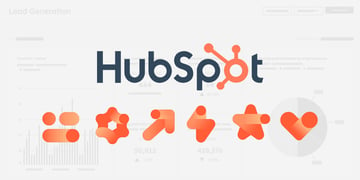The essence of WCAG: a guide to digital accessibility
? min read

Starting from June 28, 2025, the European Accessibility Act (EAA) will come into effect. It is crucial for companies to understand and implement the Web Content Accessibility Guidelines (WCAG). These guidelines are essential not only for legal compliance but also for creating an inclusive digital environment.
Explore further how to comply with the WCAG 2.1 AA guidelines and ensure that your website is accessible to all users.
What is WCAG?
WCAG stands for Web Content Accessibility Guidelines. These guidelines, developed by the World Wide Web Consortium (W3C), provide a framework for making online content more accessible. They are categorized into three conformance levels: A, AA, and AAA, with A being the basic level and AAA being the most advanced.
Compliance with WCAG includes crucial aspects such as avoiding color as the sole method for conveying information, not using images of text, and ensuring clarity in titles, links, and headers. These points are fundamental for creating accessible digital environments.
Who does it apply to?
The EAA guidelines apply to various sectors starting from June 28, 2025, including e-commerce, banking, video streaming services, and transportation services. It is essential for these sectors to prepare for these upcoming changes.
Exceptions
However, there are some exceptions. "Micro Enterprises," with fewer than 10 employees and revenue of less than 2 million euros, are exempt. The obligation also does not apply to content published before June 2025, such as pre-recorded media and certain file formats.
What are the WCAG 2.1 AA guidelines?
The WCAG 2.1 AA guidelines are guidelines established by the World Wide Web Consortium (W3C) to ensure that websites are accessible to people with various disabilities. These guidelines impose requirements on navigation, color contrast, and the use of alternative text for images, among other things.
Following these guidelines ensures that everyone, regardless of their disabilities, can understand and use the content and functionality of a website. This increases web accessibility and allows more people to benefit from the information and services available online.
Key points of WCAG 2.1 A & AA
Key elements of WCAG 2.1 A & AA include:- Transcripts for audio and video.
- Subtitles for videos.
- Avoiding color as the sole means of conveying information.
- Abstaining from using images of text.
- Proper markup for notifications for screen readers.
- Enabling keyboard navigation.
- Control options for moving content.
- 'Skip to content' links.
- Clear titles, links, headers, and alternative text.
Why is it important to comply with these guidelines?
It is important to comply with the WCAG 2.1 AA guidelines because it ensures that your website is accessible to all users. By complying with these guidelines, you make your website usable for people with various disabilities, including visual, auditory, motor, or cognitive impairments.
Additionally, compliance with the WCAG 2.1 AA guidelines is also legally required in many countries, including the Netherlands. Failure to comply with these guidelines can lead to legal issues and fines.
By investing in accessibility, you improve the user experience of your website and reach a larger audience. Moreover, you contribute to an inclusive society where everyone has equal access to information and services on the web.
Steps to comply with the WCAG 2.1 AA guidelines
Step 1: Make your website easy to navigate
An important guideline to follow is to create an easily navigable website. Ensure that users can quickly and easily find the information they need. You can achieve this by using a clear and consistent navigation structure where the most important parts of your website are easily accessible.
Additionally, it's important to provide alternative navigation methods, such as a sitemap, search function, or a list of links. This allows users with different disabilities, such as visual or motor impairments, to navigate your website easily.
Step 2: Ensure an adequate color contrast
Good color contrast is essential for an accessible website. Ensure that text is legible for people with visual impairments, such as color blindness or low vision. Use sufficient contrast between text color and background color.
You can use online tools to check whether the color contrast on your website complies with the WCAG 2.1 AA guidelines. Adjust colors if necessary to make the text readable for everyone.
Step 3: Use alternative text for images
Using alternative text for images is crucial for users with visual impairments. This alternative text, also known as alt text, is read aloud by screen readers and provides a description of the content or function of an image.
Make sure that every image on your website has a clear and descriptive alt text. This allows users with visual impairments to understand the content of the images, even if they cannot see the images themselves.
Practical Examples
We understand that it can be challenging to keep track of everything. A tip: for following a practical guide, see this WCAG 2.1 AA checklist.
You can also view our case study of Cure, a government agency that we prepared for WCAG 2.1 regulations early on.
Open Questions
With WCAG 2.1 as the current standard and WCAG 2.2 on the horizon, there are questions about the exact implementation of the guidelines. Additionally, there are uncertainties about who precisely falls under the legislation and what the implementation requires.
Complying with WCAG guidelines is essential for creating an inclusive digital world. Webwonders offers services for periodic website scans to comply with these guidelines. Contact us here for more information.












